Occupying Wall Street in the Nation's Capital
In 2011, as uprisings unfolded all over the world, the United States saw the beginning of its own movement. With the economic recession still looming in every American’s mind, people hoped for a brighter future. To move forward, it became clear that drastic economic and social reform was necessary. The Occupy Wall Street (OWS) movement became a major voice for this reform and set out to confront corruption and encourage equality. Shortly after the OWS protests began in NYC, McPherson Square became the OWS headquarters in the nation’s capital, Washington, DC. Located on K Street, home to some of the lobbyists responsible for corporate corruption, McPherson Square was a symbolic location for Occupy DC to inhabit. From this hub, protestors established a cohesive community of hundreds, and organized rallies and marches concerning various issues.
In October of 2011, I began documenting the Occupy Wall Street movement in Washington, DC. In the beginning, no more than 20 young people occupied McPherson Square. Men in suits could be overheard laughing or taunting the small group of occupiers. No one took the group seriously, and many thought they were just part of a trend that would soon vanish, others thought that the ‘real’ occupiers were in New York City. After a few weeks, tents began popping up at McPherson Square and the number of protestors increased exponentially. It soon became clear that this group of disgruntled, politically aware Americans was much larger than initially realized, and it was growing.
On October 6, 2011, a rally called “Stop the Machine” attracted thousands of protesters to Freedom Plaza, just several blocks from McPherson Square. This predominantly anti-war protest drew many from Occupy DC, and eventually led to Freedom Plaza becoming the second headquarter for Occupy DC. As the weeks went by, critics speculated that Occupy protesters would get tired or cold, and retreat to their homes. However, the movement gained momentum and grew steadily, showcasing a unique ability to galvanize people of all ages, backgrounds, and political affiliations. At Occupy DC, one could expect to see lawyers, artists, students, teenagers, and grandparents united for the common goal of holding perpetrators of corporate greed and corruption accountable. “We are the 99%” and “Banks got bailed out, we got sold out” became common chants for many Occupy activists.
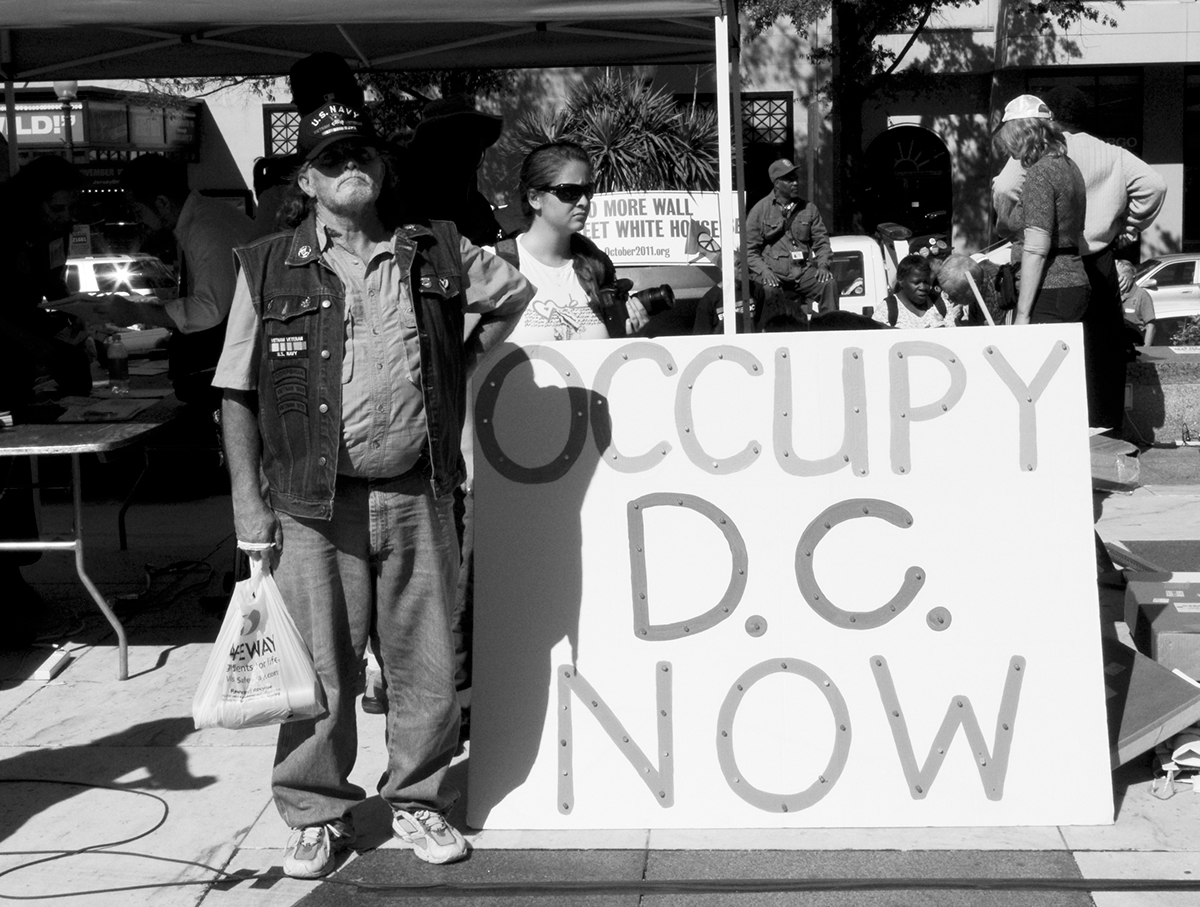


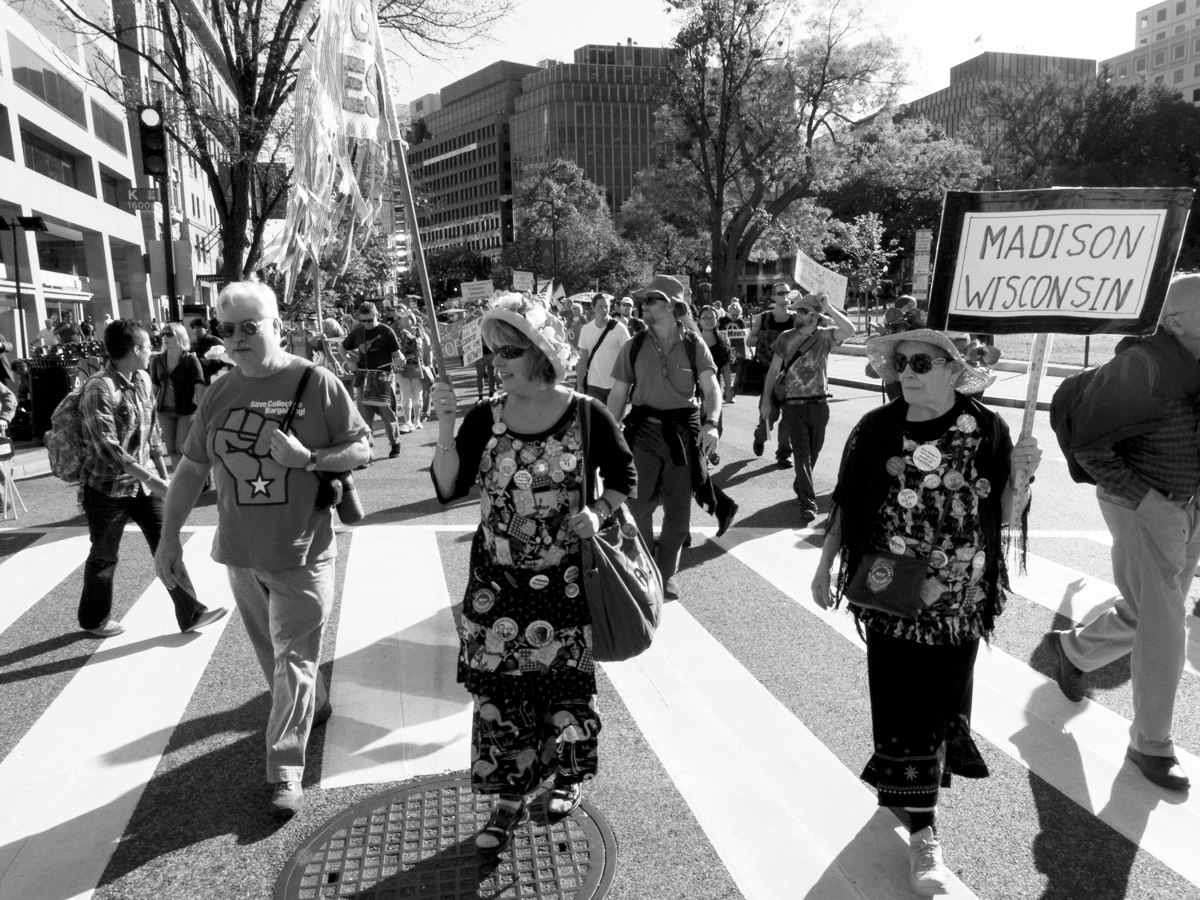
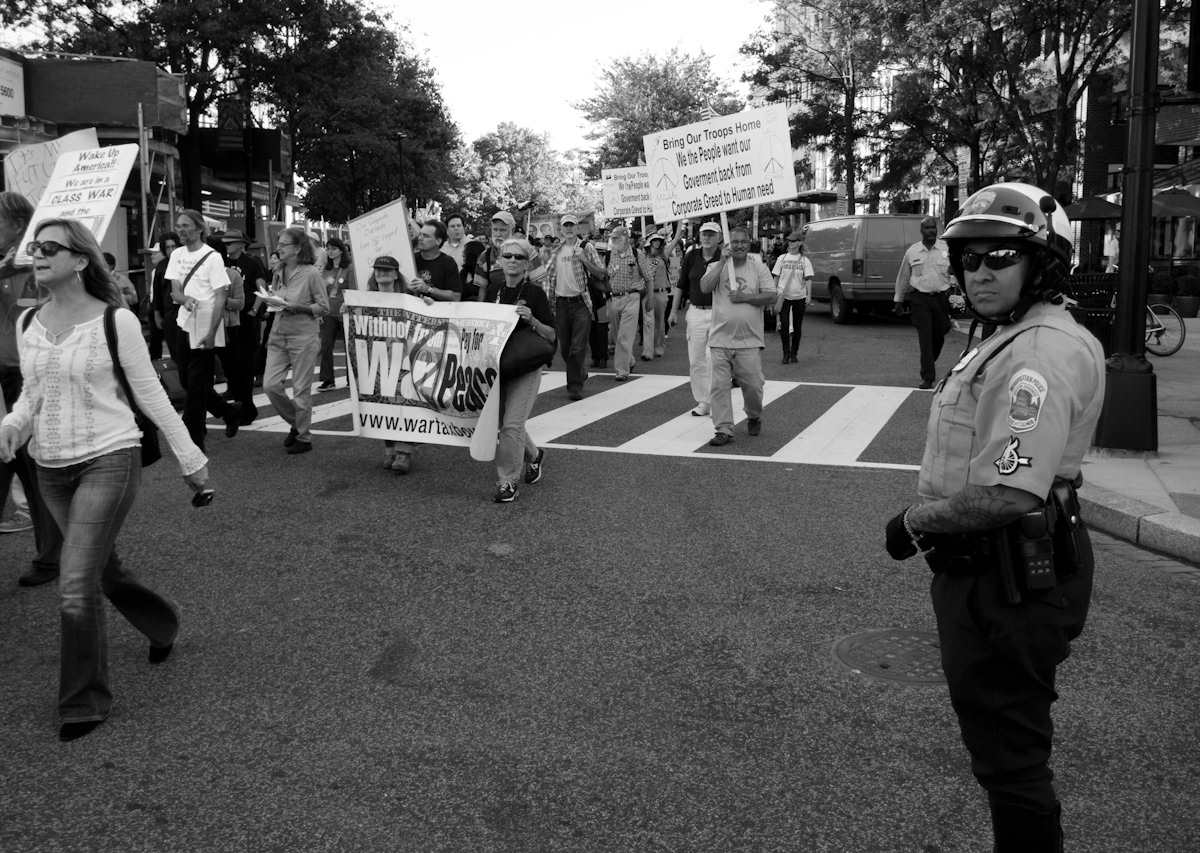
After the “Stop the Machine” rally, almost every bit of McPherson Square was covered with tents, and the same was true for much of Freedom Plaza. Along with their tents and sleeping bags, protestors were armed with creative, often humorous signs, with messages like “End the Fed!,” “Can you spare a billion?,” or “Love is too big to fail.” Occupy DC flourished and soon McPherson Square was home to a library, a first aid facility, and a public kitchen. Organizers even established two Occupy DC newspapers that printed thousands of copies, The Occupied Times and The Occupied Post. Although Occupiers agreed on the main ideals of the movement, there were plenty of issues that created conflict between different factions of protestors.
One day in late 2011, I arrived at McPherson Square to find that the mood had changed. There was tension in the air and fewer smiling faces than usual. The statue of Civil War General James McPherson, for whom the park is named, had been defaced by chalk graffiti. Some protestors had written Occupy slogans all over the base of the statue. Some protestors opposed the graffiti, saying that it was disrespectful, and hurtful to the cause. The tension came to a climax when several people began washing the chalk from the base of the statue. The conflict never became physical, but feelings were hurt and this event, along with similar disputes, caused a division that would ultimately limit the success of Occupy DC.
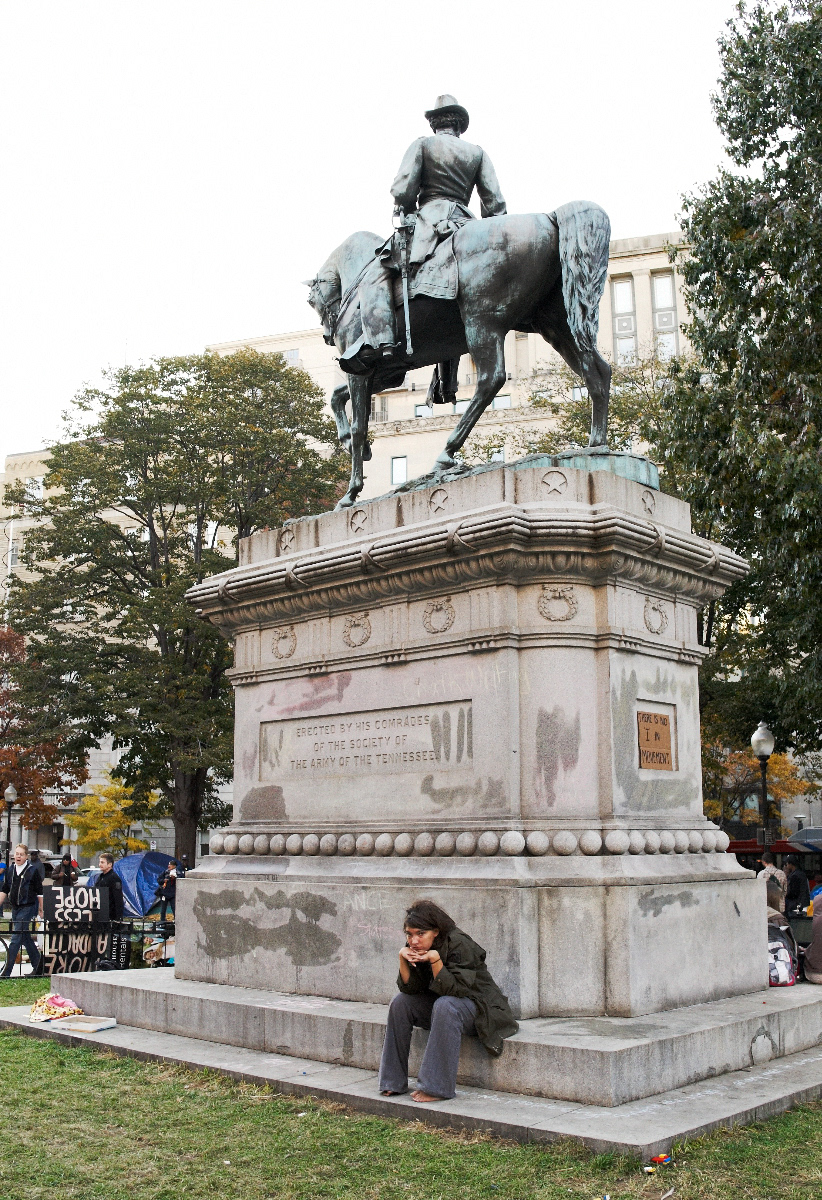

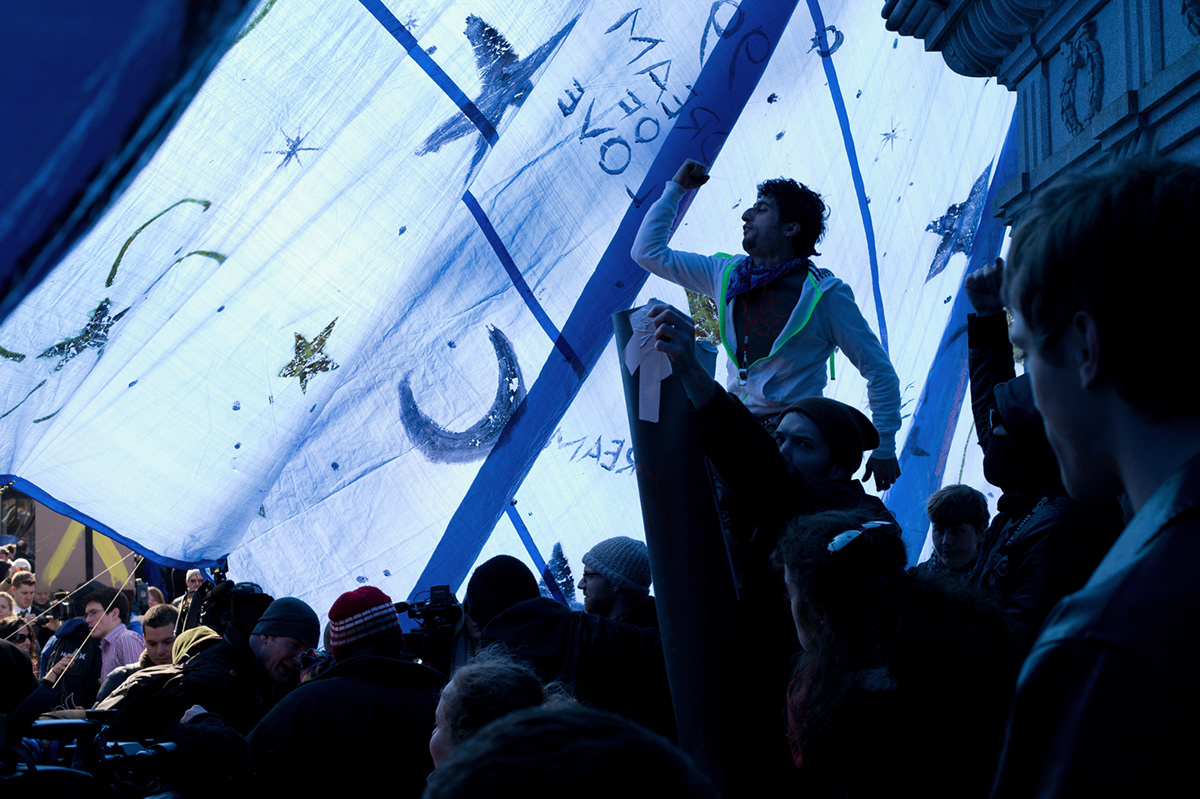


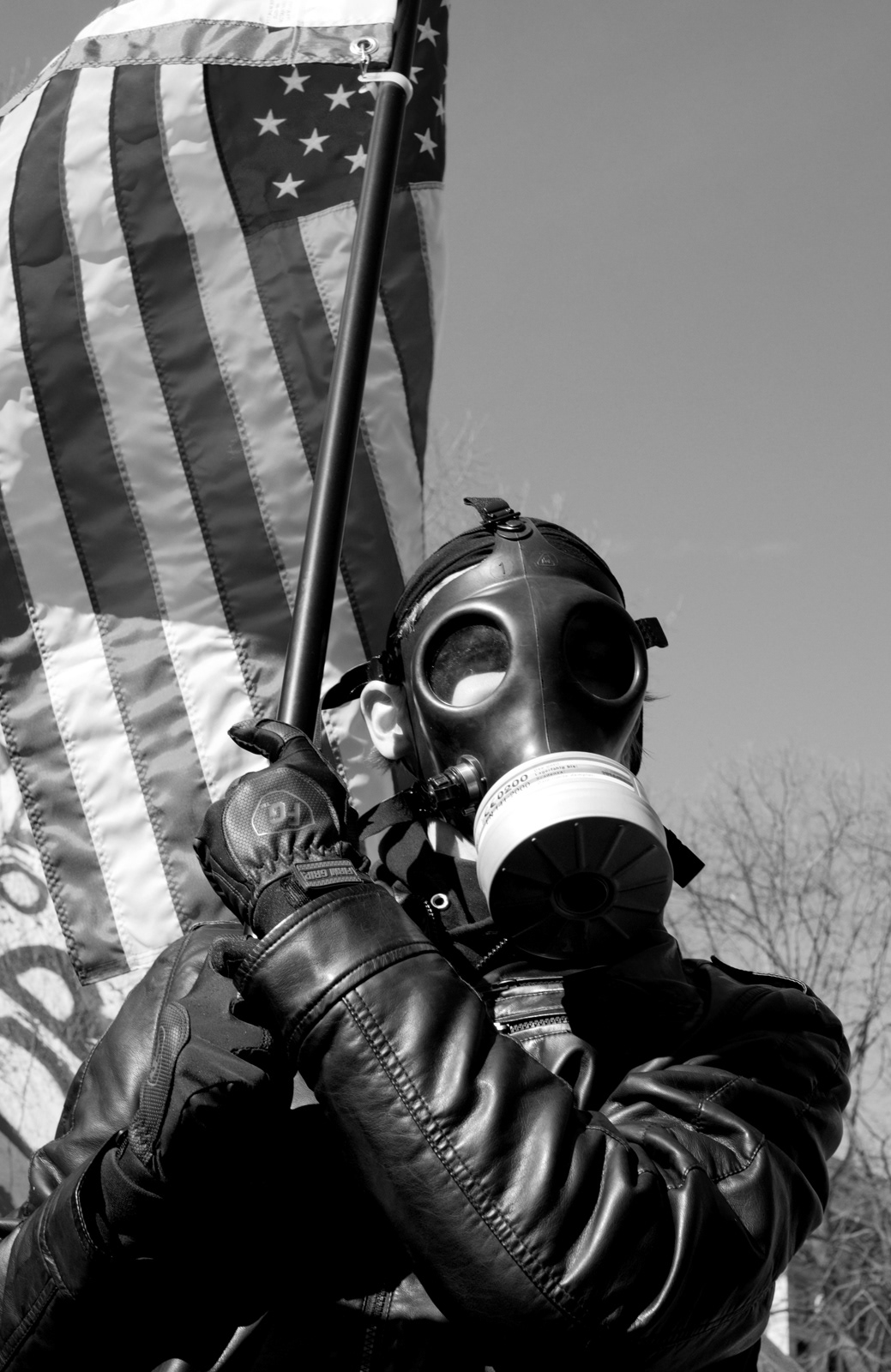
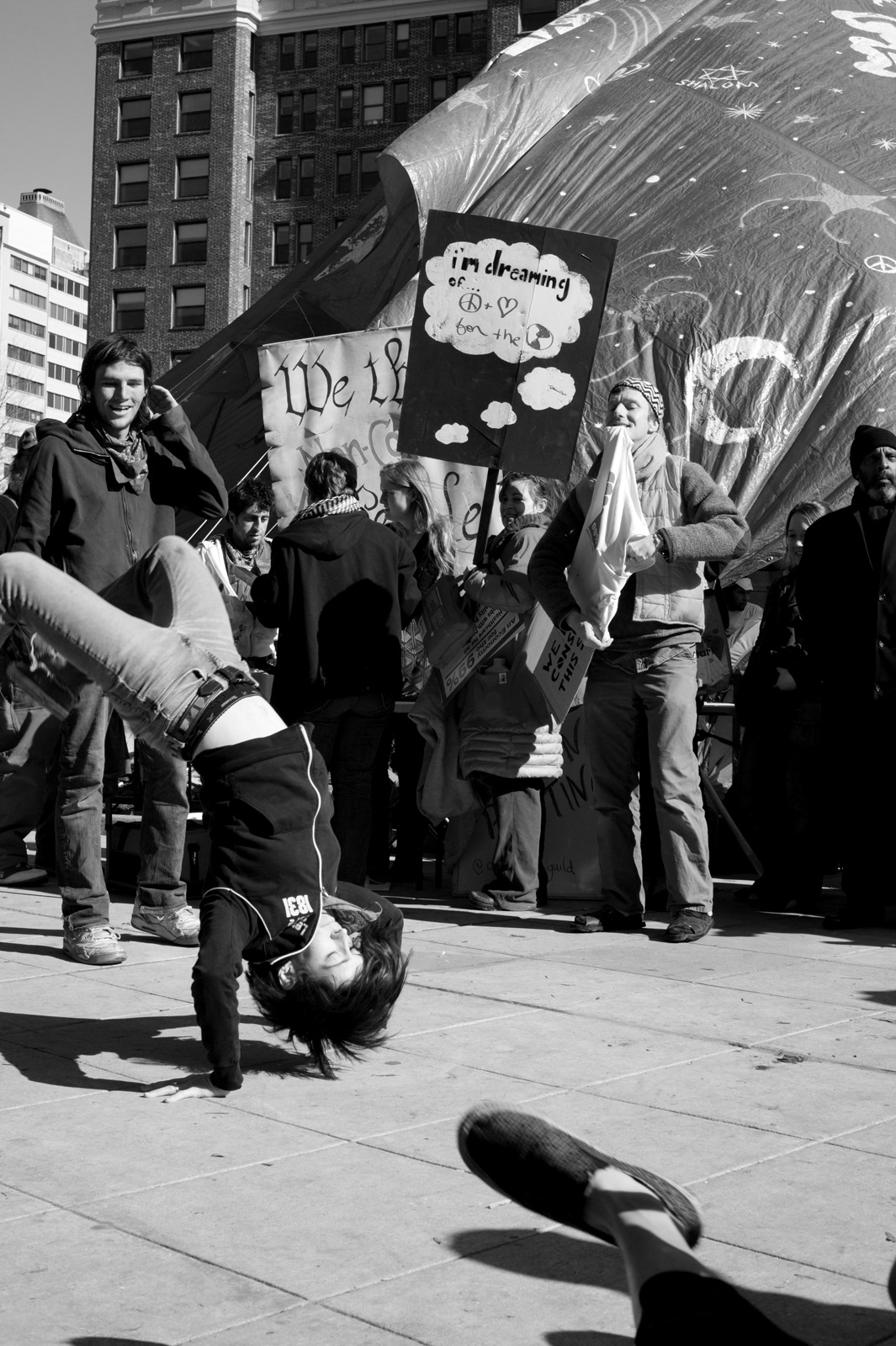
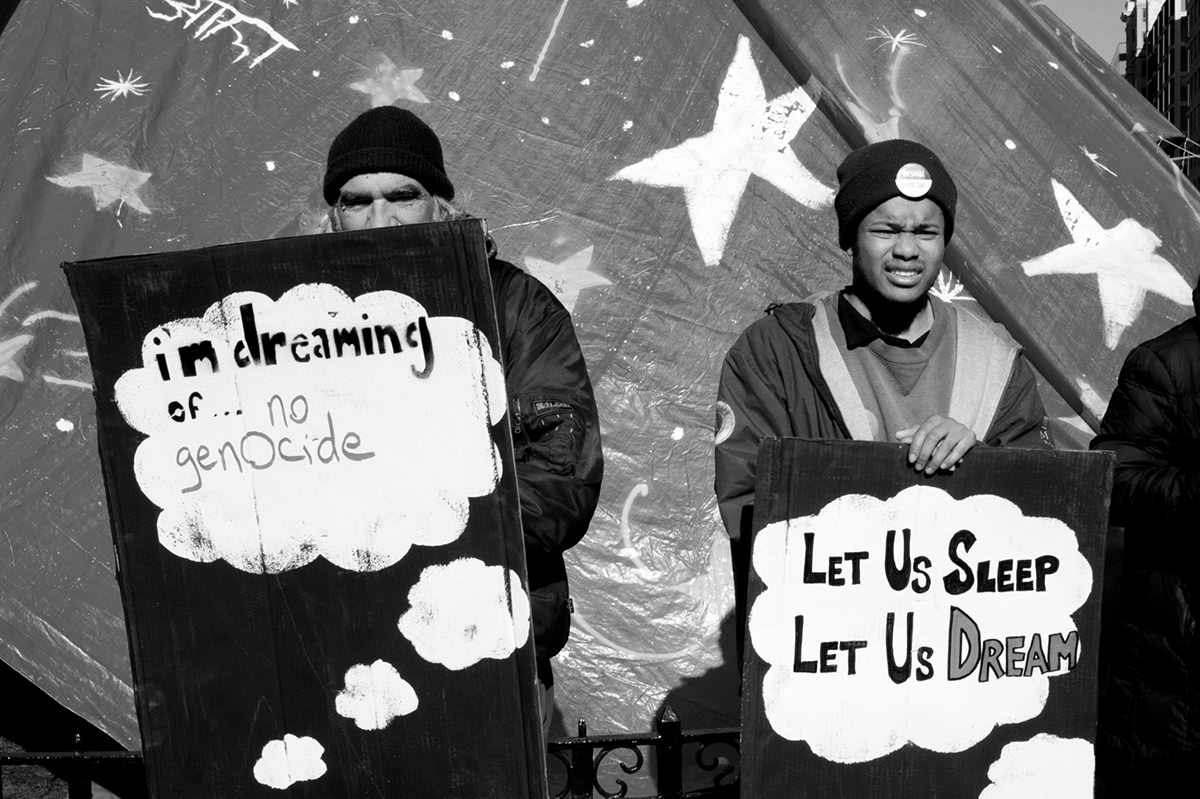
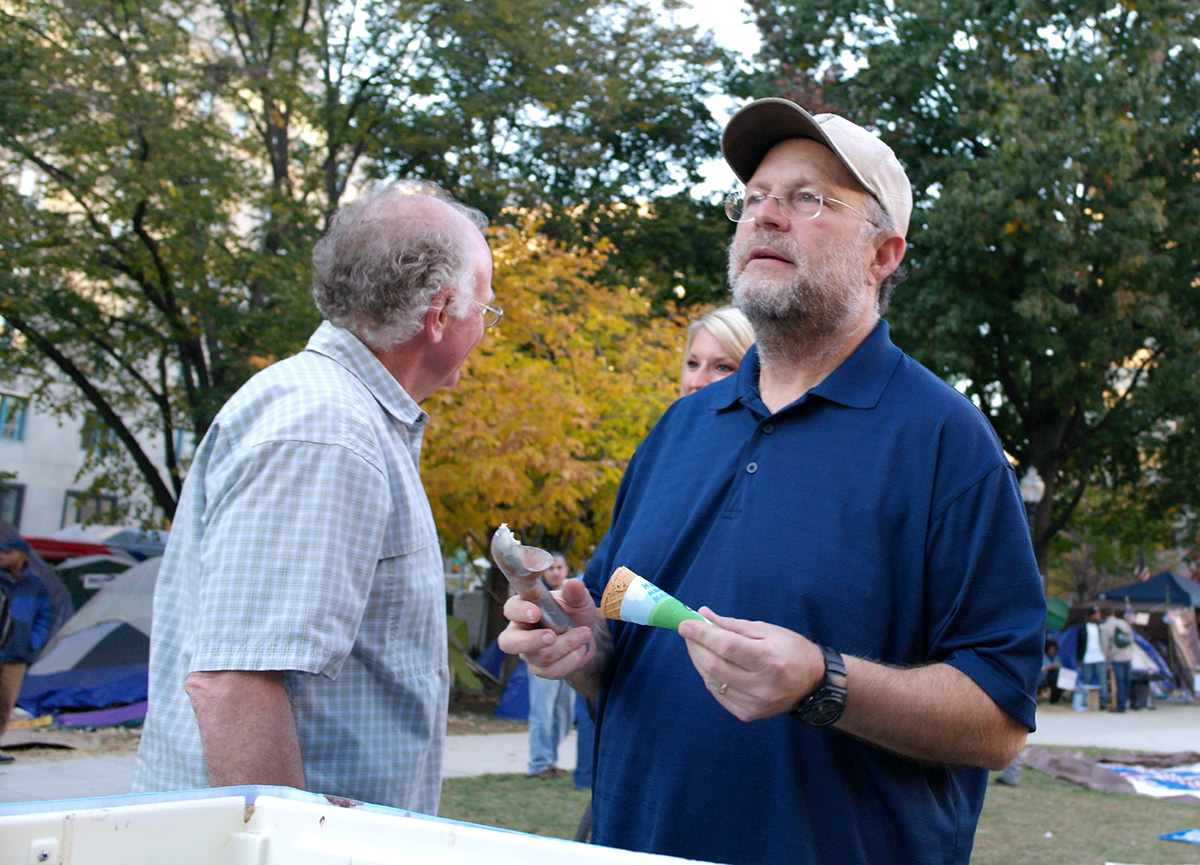
The most extreme members of the Occupy DC crowd began to have a negative impact on the movement. Some protestors believed in a “by any means necessary” approach, while others saw Occupy DC as a more passive way of making politicians and Wall Street take notice. In February of 2012, the numbers at Occupy DC began to decrease. After several violent encounters with police, and numerous arrests, many prudent protestors called it quits. This exodus of levelheaded activists left Occupy DC with an excess of extremists that hindered the cause and made it easier for law enforcement officials to justify the impending eviction.
After intense pressure from conservatives in Congress, park police began enforcing camping restrictions at McPherson Square and Freedom Plaza, effectively restricting Occupy DC’s growth. After an eviction of Occupy DC was announced, the number of protestors peaked, as did the media presence. The police initially backed down and delayed the eviction; occupiers tested police by erecting the “Tent of Dreams,” a huge blue tarp draped over the General McPherson statue. After several days, when the media storm had calmed, police raided McPherson Square, confiscating contraband and items deemed to be of safety concern. A day later, police flooded the Occupy camp at Freedom Plaza. After barricading the plaza to keep protesters out, police and haz-mat personnel began searching tents and trashed sleeping bags and other banned items. Many protesters believed that pressure from the police would strengthen the Occupy movement; however, after several waves of eviction procedures, the movement fizzled.
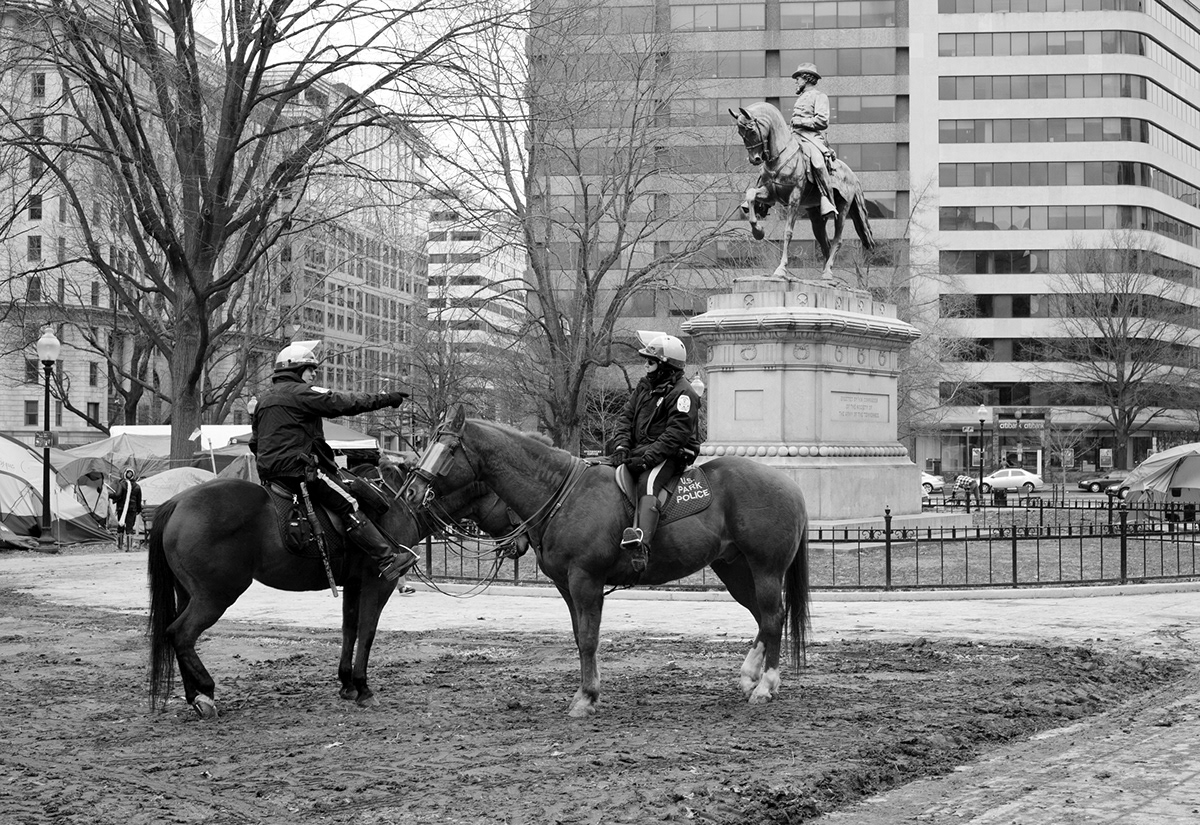
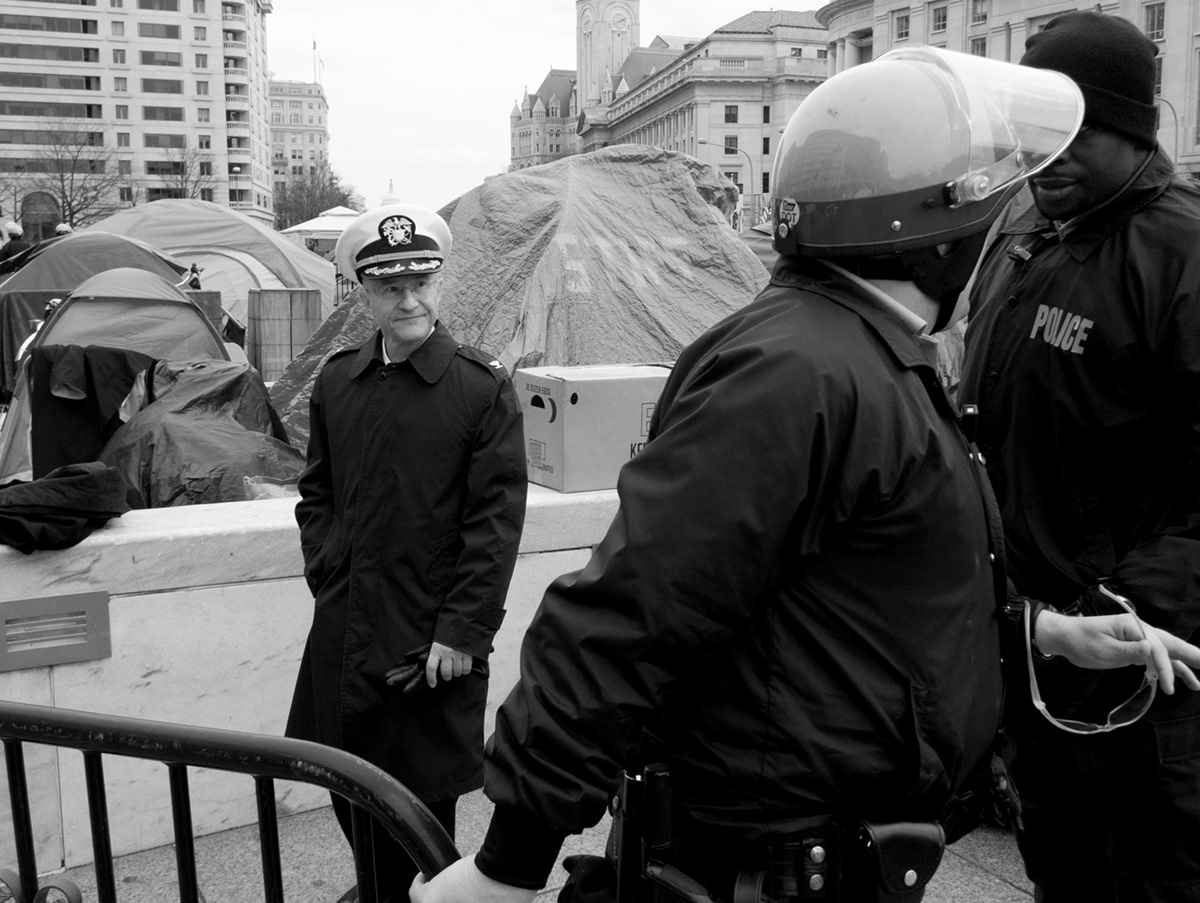
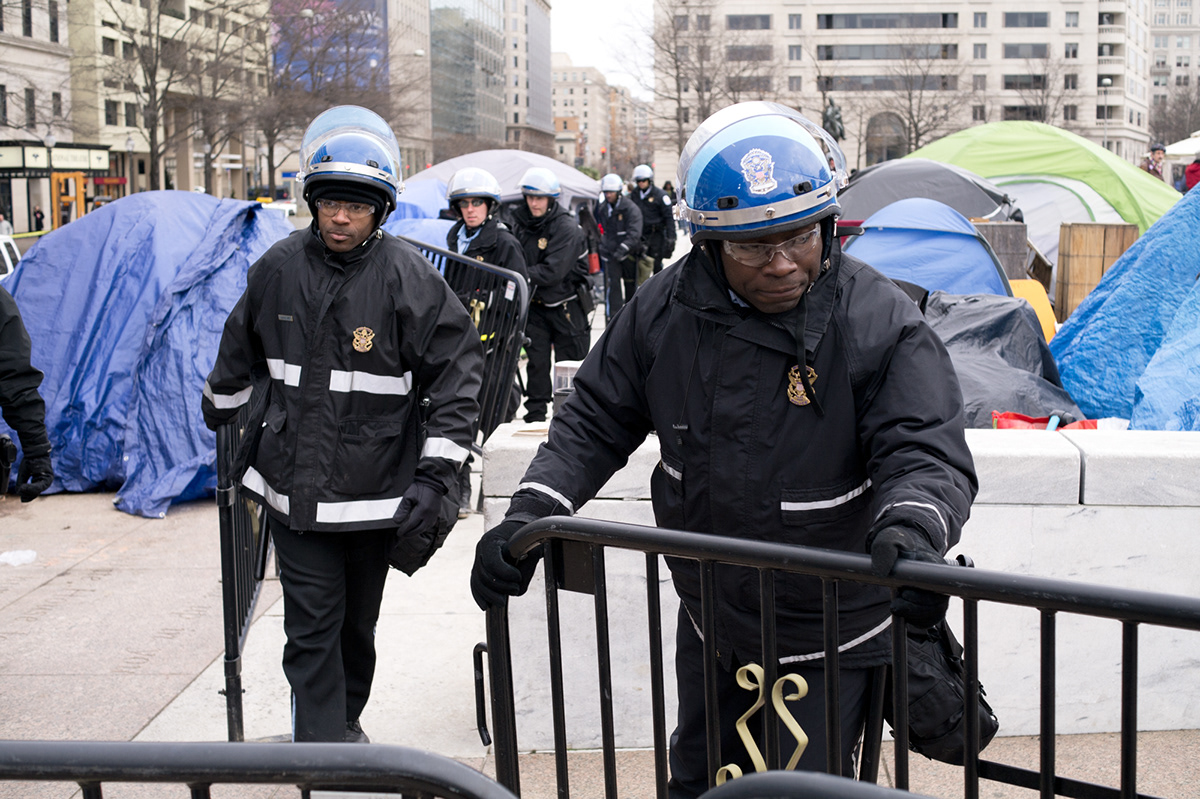

Occupy DC’s physical presence may have dwindled away, but the ideals of the movement remain in the hearts and minds of many Americans. Occupy Wall Street taught Americans that it is okay for vastly different people to come together on important issues. It is reasonable to believe that the Occupy movement would not have been nearly as successful and vibrant if people quibbled over political affiliation or philosophical beliefs. This idea of looking past differences and coming together for the greater good is what Occupy Wall Street was originally about. The 99% continue to pressure the 1%, hoping to reduce the injustices and inequity perpetuated by the selfish and often corrupt Wall Street mentality.


